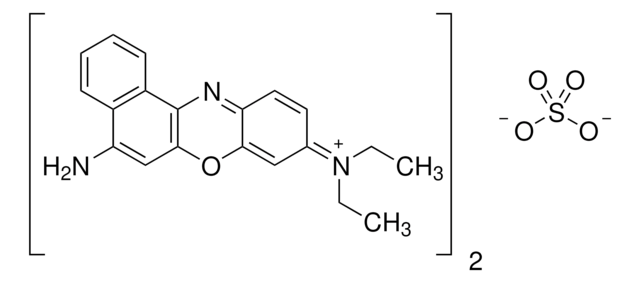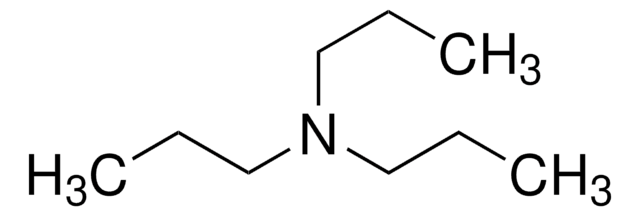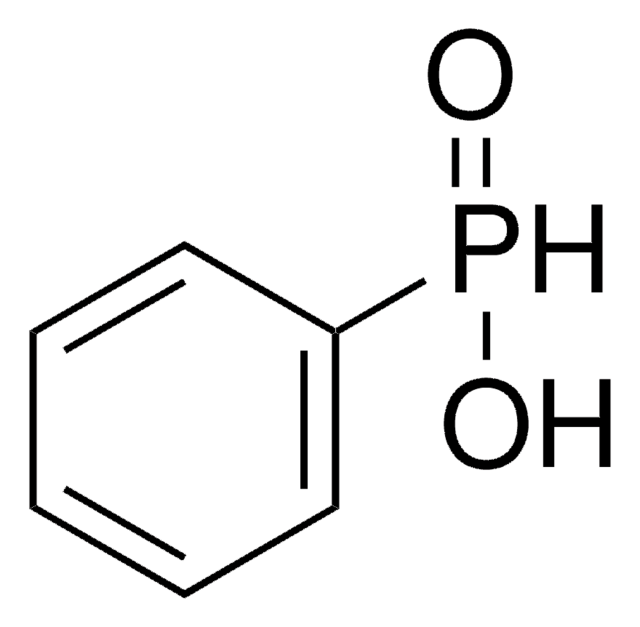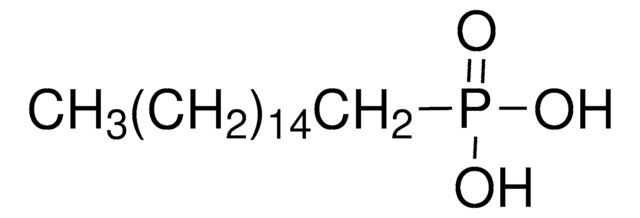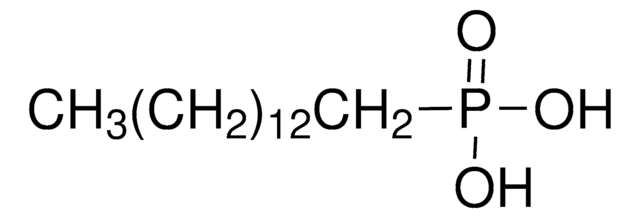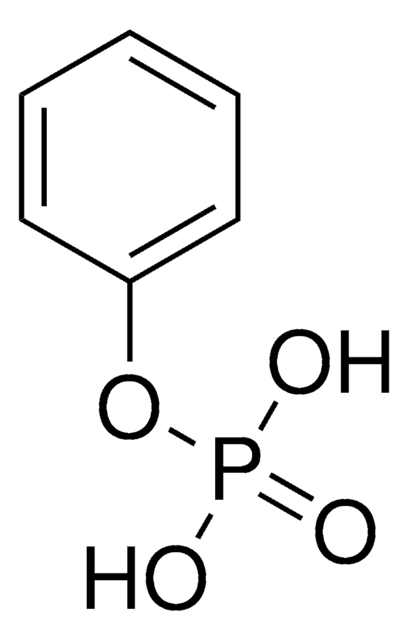すべての画像(1)
About This Item
実験式(ヒル表記法):
C16H35O2P
CAS番号:
分子量:
290.42
UNSPSCコード:
12352100
PubChem Substance ID:
NACRES:
NA.22
おすすめの製品
グレード
technical
アッセイ
~90% (T)
フォーム
liquid
屈折率
n20/D 1.460
密度
0.916 g/mL at 20 °C (lit.)
SMILES記法
CC(C)CCCCCP(O)(=O)CCCCCC(C)C
InChI
1S/C16H35O2P/c1-15(2)11-7-5-9-13-19(17,18)14-10-6-8-12-16(3)4/h15-16H,5-14H2,1-4H3,(H,17,18)
InChI Key
GBNVBFGHGMAMDH-UHFFFAOYSA-N
詳細
Diisooctylphosphinic acid is an organophosphorous acid.
アプリケーション
Diisooctylphosphinic acid (DiOPA) may be used in the following studies:
- As the surface passivating ligand in the synthesis of magic-sized CdSe and CdTe nanocrystals.
- As extractant in the extraction of Indium(III) from sulfate solutions.
- As ligand to investigate the solubility of four copper ligand systems in supercritical CO2.
- As acid ligand for the Supercritical fluid extraction (SFE) of divalent metals (Zn2+, Cu2+, Pb2+, Cd2+ and Cr3+) from sand and fly ash using CO2.
シグナルワード
Warning
危険有害性情報
危険有害性の分類
Eye Irrit. 2
保管分類コード
10 - Combustible liquids
WGK
WGK 3
引火点(°F)
226.4 °F - closed cup
引火点(℃)
108 °C - closed cup
個人用保護具 (PPE)
Eyeshields, Gloves, type ABEK (EN14387) respirator filter
適用法令
試験研究用途を考慮した関連法令を主に挙げております。化学物質以外については、一部の情報のみ提供しています。 製品を安全かつ合法的に使用することは、使用者の義務です。最新情報により修正される場合があります。WEBの反映には時間を要することがあるため、適宜SDSをご参照ください。
消防法
第4類:引火性液体
第三石油類
危険等級III
非水溶性液体
Jan Code
38223-100ML-F:
38223-BULK-F:
38223-VAR-F:
38223-500ML-F:
最新バージョンのいずれかを選択してください:
この製品を見ている人はこちらもチェック
Extraction of heavy metals from fly ash and sand with ligands and supercritical carbon dioxide.
Kersch C, et al.
Industrial & Engineering Chemistry Research, 39(12), 4670-4672 (2000)
Synthesis of magic-sized CdSe and CdTe nanocrystals with diisooctylphosphinic acid.
Dukes III AD, et al.
Chemistry of Materials, 22(23), 6402-6408 (2010)
De la Rosa JR, et al.
Materials and Manufacturing Processes, 26(2), 304-310 (2011)
Extraction of indium (III) from sulfate solutions with organophosphorus acids.
Travkin VF, et al.
Russian Journal of Applied Chemistry, 77(10), 1613-1617 (2004)
Taeyjuana Y Lyons et al.
Langmuir : the ACS journal of surfaces and colloids, 33(12), 3018-3027 (2017-03-01)
The increasing commercialization of consumer electronic products that make use of II-VI semiconductor quantum dots (QDs) has raised significant concerns about their impact on natural systems and human health once they are released into the environment at the end of
ライフサイエンス、有機合成、材料科学、クロマトグラフィー、分析など、あらゆる分野の研究に経験のあるメンバーがおります。.
製品に関するお問い合わせはこちら(テクニカルサービス)






